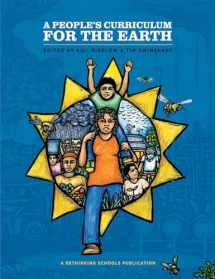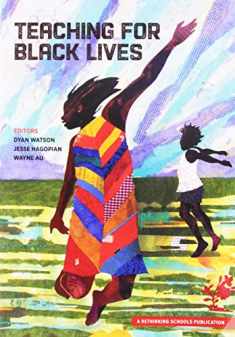
A People's Curriculum for the Earth: Teaching About the Environmental Crisis
Book details
Summary
Description
Five years in the making, A People's Curriculum for the Earth is a collection of articles, role plays, simulations, stories, poems, and graphics to help breathe life into teaching about the environmental crisis. The book features some of the best articles from Rethinking Schools magazine alongside classroom-friendly readings on climate change, energy, water, food, and pollution--as well as on people who are working to make things better. At a time when it's becoming increasingly obvious that life on Earth is at risk, here is a resource that helps students see what's wrong and imagine solutions.
Chapter 1: The Whole Thing Is Connected
We can continue the enclosure of the commons, begun so long ago the privatization and commodification of nature or we can recognize the fundamental truth that we are all connected and that there is nothing private about how we treat the Earth, or each other.
Chapter 2: Grounding Our Teaching
Grounding our students in their communities doesn t just connect them to nature; it also connects them to the ways their communities have been battered by powerful interests, and how race and class have shaped those communities.
Chapter 3: Facing Climate Chaos
Articles in this chapter will help students recognize the significance of the climate crisis and see that the people being hit the hardest are the ones least responsible. Through various activities students consider root causes of the crisis in order to critically think about the deep social changes we will need to respond fairly and decisively.
Chapter 4: Burning the Future
Burning the Future has a metaphorical ring, but it s no metaphor it s literally true: We are burning the future. This chapter deals with the overall issue of fossil fuels and then is divided into three sections: coal, oil, and natural gas and fracking. Yes, we are burning the future. But nothing is inevitable. This is a key lesson from history, and from the activities included in this chapter.
Chapter 5: Teaching in a Toxic World
Articles in this chapter describe how toxic trespass happens in far too many ways in our lives here and around the world. Because of the intimate nature of the toxic trespass, students first reaction may be self-protection or individual consumer choices, rather than collective action. This chapter provides abundant evidence that people are taking collective action.
Chapter 6: Food, Farming, and the Earth
Food embodies many of the ecological problems and social injustices highlighted throughout the book. And similarly, it calls out for activism that recognizes the interconnectedness of these issues.


We would LOVE it if you could help us and other readers by reviewing the book
Book review




